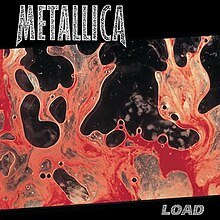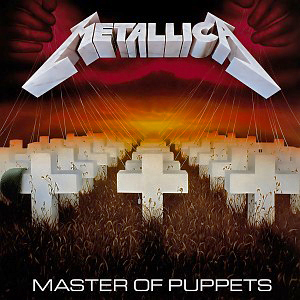
Master of Puppets is the third studio album by the American heavy metal band Metallica, released on March 3, 1986, by Elektra Records. Recorded in Copenhagen, Denmark at Sweet Silence Studios with producer Flemming Rasmussen, it was the band's final album to feature bassist Cliff Burton, who died in a bus accident in Sweden during the album's promotional tour.
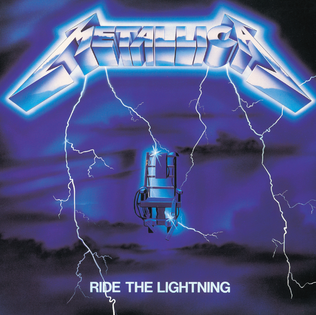
Ride the Lightning is the second studio album by the American heavy metal band Metallica, released on July 27, 1984, by the independent record label Megaforce Records. The album was recorded in three weeks with producer Flemming Rasmussen at Sweet Silence Studios in Copenhagen, Denmark. The artwork, based on a concept by the band, depicts an electric chair being struck by lightning flowing from the band logo. The title was taken from a passage in Stephen King's novel The Stand, in which a character uses the phrase to refer to execution by electric chair.

Metallica is the fifth studio album by American heavy metal band Metallica. It was released on August 12, 1991, by Elektra Records. Recording sessions took place at One on One Recording Studios in Los Angeles over an eight-month span that frequently found Metallica at odds with their new producer Bob Rock. The album marked a change in the band's music from the thrash metal style of their previous four albums to a slower, heavier, and more refined sound.

S&M is a live album by American thrash metal band Metallica, with the San Francisco Symphony conducted by Michael Kamen. It was recorded on April 21 and 22, 1999, at The Berkeley Community Theatre. This is the final Metallica album to feature bassist Jason Newsted.
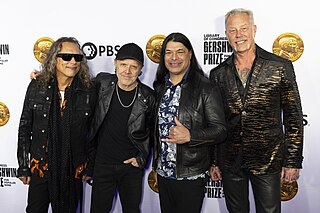
Metallica is an American heavy metal band. The band was formed in 1981 in Los Angeles by vocalist and guitarist James Hetfield and drummer Lars Ulrich, and has been based in San Francisco for most of its career. The band's fast tempos, instrumentals and aggressive musicianship made them one of the founding "big four" bands of thrash metal, alongside Megadeth, Anthrax and Slayer. Metallica's current lineup comprises founding members and primary songwriters Hetfield and Ulrich, longtime lead guitarist Kirk Hammett and bassist Robert Trujillo. Guitarist Dave Mustaine, who formed Megadeth after being fired from Metallica, and bassists Ron McGovney, Cliff Burton and Jason Newsted are former members of the band.

Kill 'Em All is the debut studio album by the American heavy metal band Metallica, released on July 25, 1983, through the independent label Megaforce Records. After forming in 1981, Metallica began by playing shows in local clubs in Los Angeles. They recorded several demos to gain attention from club owners and eventually relocated to San Francisco to secure the services of bassist Cliff Burton. The group's No Life 'til Leather demo tape (1982) was noticed by Megaforce label head Jon Zazula, who signed them and provided a budget of $15,000 for recording. The album was recorded in May with producer Paul Curcio at the Music America Studios in Rochester, New York. It was originally intended to be titled Metal Up Your Ass, with cover art featuring a hand clutching a dagger emerging from a toilet bowl. Zazula convinced the band to change the name because distributors feared that releasing an album with such an offensive title and artwork would diminish its chances of commercial success.
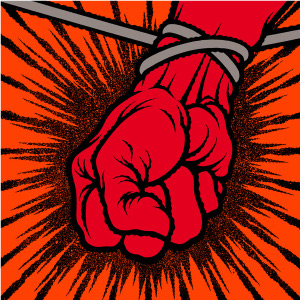
St. Anger is the eighth studio album by American heavy metal band Metallica, released on June 5, 2003. It was the last Metallica album released through Elektra Records and the final collaboration between Metallica and longtime producer Bob Rock, with whom the band had worked since 1990. This is also Metallica's only album as an official trio, as bassist Jason Newsted left the band prior to the recording sessions. Rock played bass in Newsted's place, and Robert Trujillo joined the band following its completion. Although he does not play on the album, Trujillo is credited in the liner notes and appears in photos with the band in the album's booklet.

James Alan Hetfield is an American musician. He is the lead vocalist, rhythm guitarist, co-founder, and a primary songwriter of heavy metal band Metallica. He is mainly known for his intricate rhythm playing, but occasionally performs lead guitar duties and solos both live and in studio. Hetfield co-founded Metallica in October 1981 after answering an advertisement by drummer Lars Ulrich in the Los Angeles newspaper The Recycler. Metallica has won nine Grammy Awards and released 11 studio albums, three live albums, four extended plays, and 24 singles. Hetfield is often regarded as one of the greatest heavy metal rhythm guitar players of all time.

"Nothing Else Matters" is a song by American heavy metal band Metallica. A power ballad, it was released in 1992 as the third single from their self-titled fifth studio album, Metallica. The song peaked at number 11 on the Billboard Mainstream Rock Tracks chart, number 6 on the UK Singles Chart, number 1 in Denmark, and reached the top ten on many other European charts. Recognized as one of Metallica's best known and most popular songs, it has become a staple in live performances.
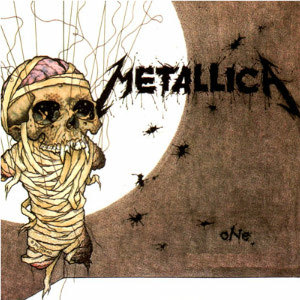
"One" is a song by American heavy metal band Metallica, released as the third and final single from the band's fourth studio album, ...And Justice for All (1988). Written by band members James Hetfield and Lars Ulrich, the song portrays a World War I soldier who is severely wounded—arms, legs and jaw blown off by a landmine, blind and unable to speak or move—begging God to take his life. In the music video, attempting to communicate with the hospital staff he jolts in his bed, spelling SOS in Morse code. Production of the song was done by the band alongside Flemming Rasmussen. The song was the band's first to chart in the U.S., reaching number 35 on the Billboard Hot 100. It was also a number one hit in Finland.

"The Memory Remains" is a song by American heavy metal band Metallica, with British singer Marianne Faithfull on backing vocals.
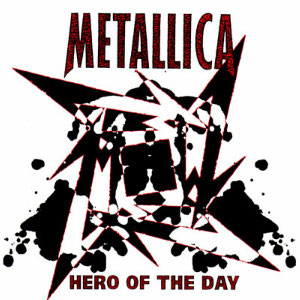
"Hero of the Day" is a song by American heavy metal band Metallica from their 1996 album Load. The song was recorded on December 13, 1995, at Plant Studios in Sausalito, California. "Hero of the Day" was Metallica's second single release from the album. The song became their second consecutive number-one hit on the US Billboard Hot Mainstream Rock Tracks chart and reached number two in Australia, number three in Finland and number eight in Norway. The song is one of the few Metallica songs written primarily in a major key. A promotional video for the track was also filmed.
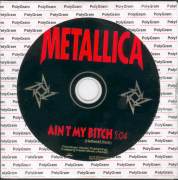
"Ain't My Bitch" is a song by American heavy metal band Metallica from their sixth album, Load (1996). It is the opening track of the album and was released as a promotional single in Mexico. It reached number 15 on the Billboard Mainstream Rock chart.

The discography of American heavy metal band Metallica includes 11 studio albums, eight live albums, three extended plays, 49 singles, 10 video albums, 43 music videos, one soundtrack album, one collaboration album and three box sets. They are a San Francisco-based metal band formed in 1981 by James Hetfield and Lars Ulrich (drums). After several bassist and lead guitarist changes, the band settled on Cliff Burton and Kirk Hammett, respectively. Metallica started playing locally, releasing their first widely circulated demo, No Life 'til Leather, in 1982. The demo caught the attention of Johny Zazula, who signed Metallica to Megaforce Records. The band released Kill 'Em All in 1983, and the following year they released Ride the Lightning. After Ride the Lightning was released, Metallica left Megaforce and signed to Elektra Records. In March 1986, the band released its third studio album, Master of Puppets, which was Metallica's first album to be certified gold by the Recording Industry Association of America (RIAA). While promoting the album, Burton was killed in a bus accident. Jason Newsted was hired as a replacement. The band's first release to feature Newsted was The $5.98 E.P. – Garage Days Re-Revisited, and then followed by ...And Justice for All in August 1988, which peaked at number six on the Billboard 200.

Death Magnetic is the ninth studio album by American heavy metal band Metallica, released on September 12, 2008, through Warner Bros. Records. The album was produced by Rick Rubin, marking the band's first album since ...And Justice for All (1988) not to be produced by longtime collaborator Bob Rock and co-produced by Hetfield and Ulrich. It is also the first Metallica album with bassist Robert Trujillo, and the second to share writing credit to all of the band's members.

Reload is the seventh studio album by American heavy metal band Metallica, released on November 18, 1997, via Elektra Records. The album is a follow-up to Load, released the previous year, and Metallica's last studio album to feature bassist Jason Newsted. Reload debuted at number one on the Billboard 200, selling 436,000 copies in its first week. It was certified 3× platinum by the Recording Industry Association of America (RIAA) for shipping three million copies in the United States.
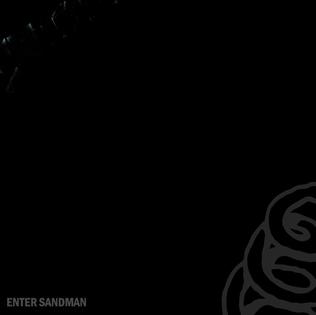
"Enter Sandman" is a song by American heavy metal band Metallica. It is the opening track and lead single from their self-titled fifth album, released in 1991. The music was written by Kirk Hammett, James Hetfield and Lars Ulrich. Vocalist and guitarist Hetfield wrote the lyrics, which deal with the concept of a child's nightmares.

Metallica: Through the Never is a soundtrack album for the film of the same name, consisting of live recordings by American heavy metal band Metallica. It was released on September 24, 2013, via Blackened Recordings and has charted in several countries.

Hardwired... to Self-Destruct is the tenth studio album by American heavy metal band Metallica, released as a double album on November 18, 2016, by the band's record label Blackened Recordings. It was Metallica's first studio album in eight years following Death Magnetic (2008), marking the longest gap between studio albums in the band's career, and its first studio album released through Blackened. The album was produced by Greg Fidelman, who engineered and mixed Death Magnetic.

72 Seasons is the eleventh studio album by American heavy metal band Metallica, released on April 14, 2023, by their own record label Blackened Recordings. 72 Seasons was produced by Greg Fidelman, who produced the band's previous studio album, Hardwired... to Self-Destruct (2016), and is the band's second studio album to be released through Blackened.
